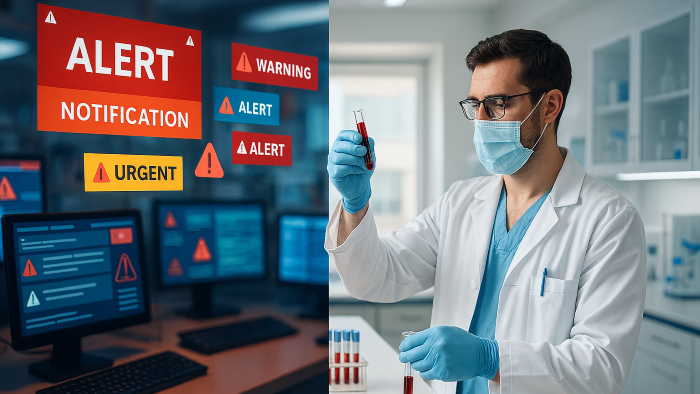From Chaos to Clarity: 5 Steps for Managing Attention Overload

In today's fast-paced healthcare environment, lab professionals juggle a constant demand for attention that doesn't just feel overwhelming—it represents a genuine patient safety concern. Welcome to the attention economy of healthcare, where focus is perhaps your most valuable and threatened resource.
Strategies for Navigating Attention Economy in the Lab
1. Prioritize and Filter Alerts
Hospital and lab staff are bombarded with notifications from LIS, EHRs, and equipment alerts which can make it harder to distinguish critical messages. Work with IT teams to customize alert settings using LIS or notification systems to prioritize urgent cases, using color-coded or tiered alerts.
2. Implement Focus Zones
Distractions can be a big contributor to human error. Designate specific areas as quiet focus zones where phone calls and conversations are minimized.
3. Reduce Task-Switching
Excessive task-switching can lead to longer completion times and increase the risk of errors. Whenever possible, batch similar tasks together and use checklists for critical procedures to minimize errors. Also consider rotating responsibilities to allow certain team members to focus on one task at a time and creating dedicated "focus periods" where non-urgent requests are deferred.
4. Encourage Mental Reset Techniques
Long shifts of divided attention can lead to mental fatigue. Utilize 'micro-recoveries'—60-90 second mental resets between tasks. Simple techniques like box breathing can reset the autonomic nervous system and reduce errors. When needed, consider 5-minute breaks and a brief walk.
5. Foster a Culture of Attention Awareness
Hospitals and labs can benefit from training and policies that emphasize focus management as a workplace priority. Seek training on cognitive load management and encourage team norms to minimize interruptions and support mental wellness initiatives.
Final Thoughts
In an era where attention is a scarce resource, managing focus is critical for both patient safety and employee well-being. By taking control of how and where attention is spent, labs can create an environment that supports focus, efficiency, and most importantly—patient safety.